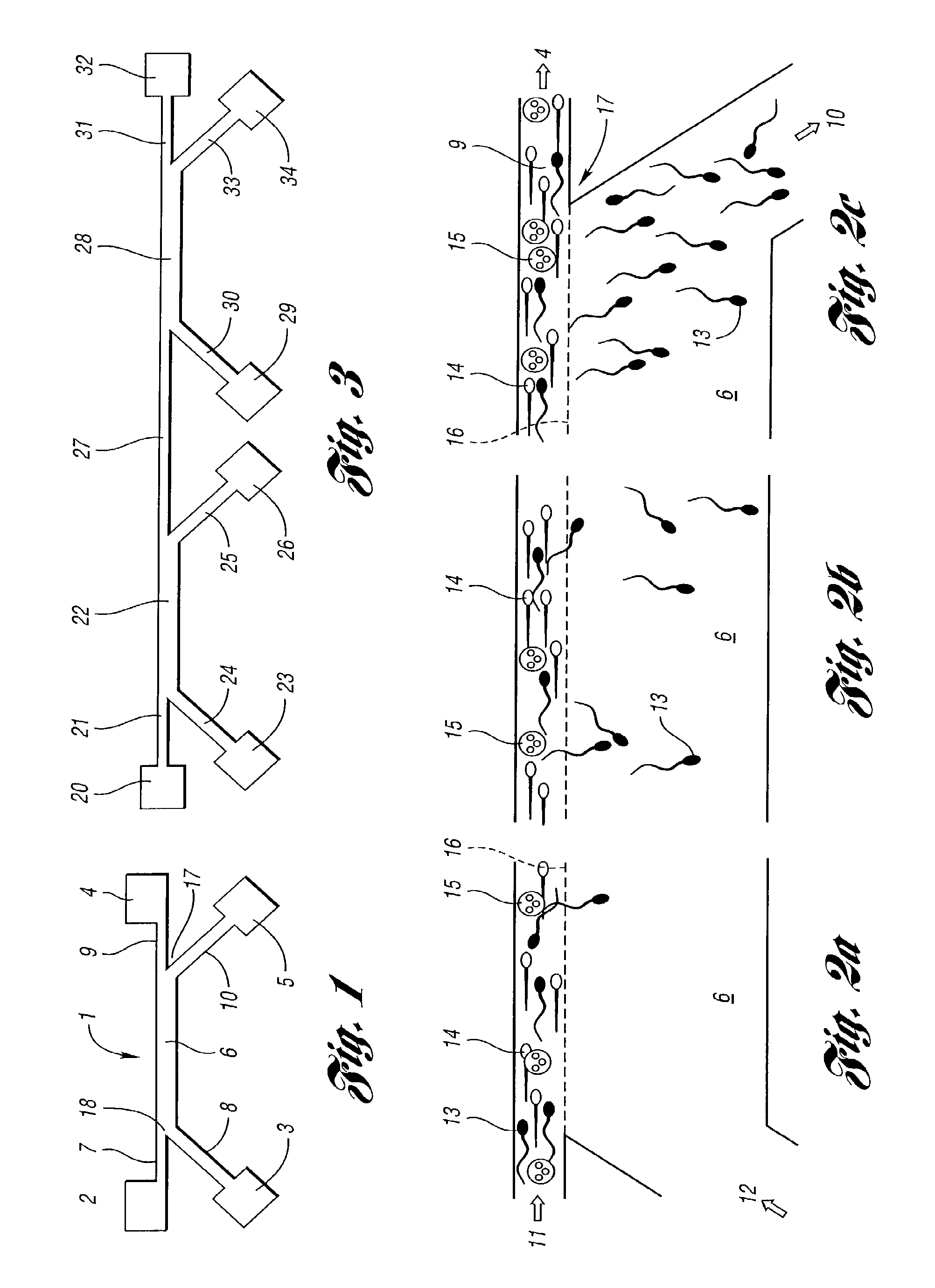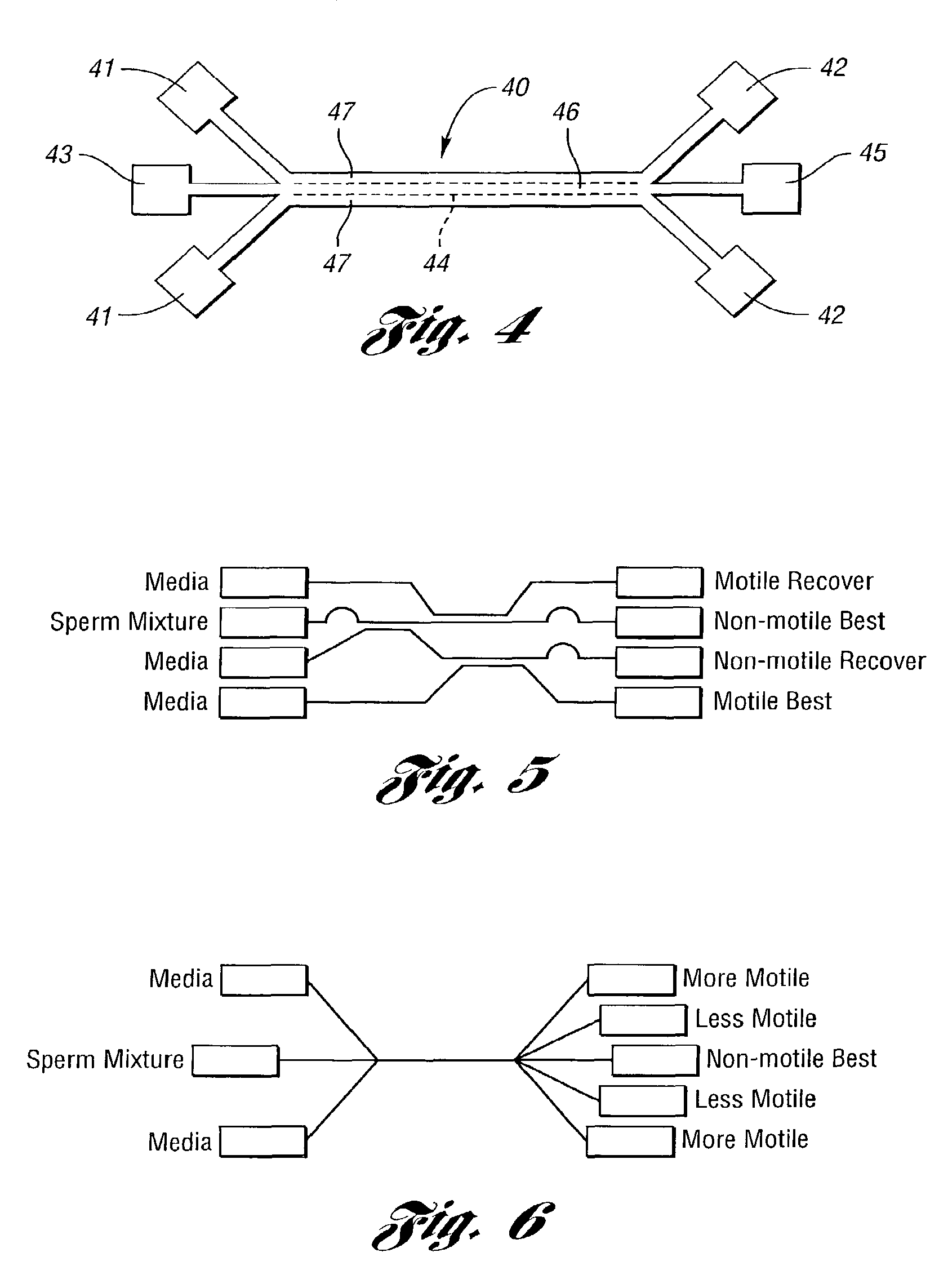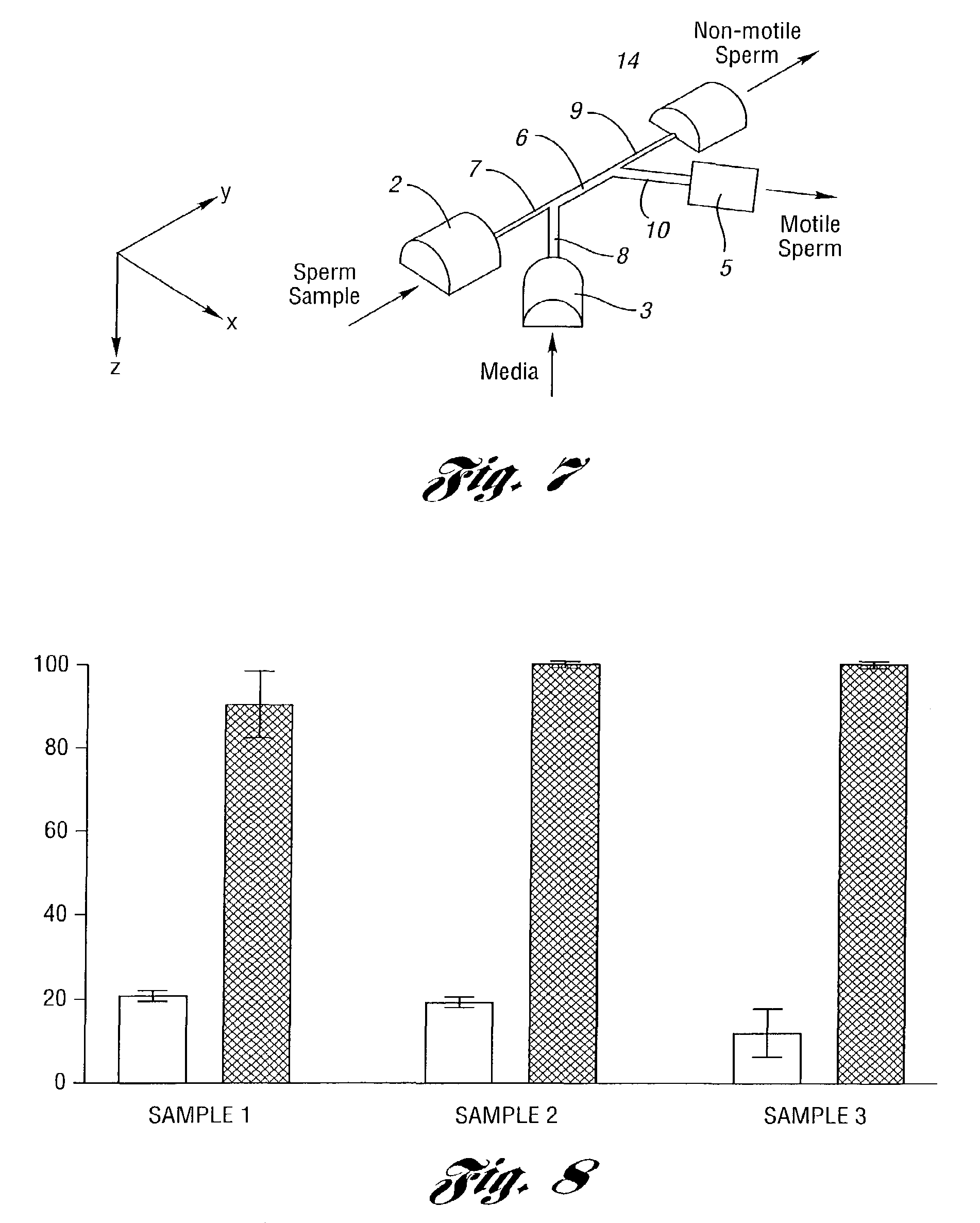Process for sorting motile particles from lesser-motile particles and apparatus suitable therfor
a technology of motile particles and molecular particles, which is applied in the field of motile particles and non-motile particles, can solve the problems of affecting the viability of sperm,
- Summary
- Abstract
- Description
- Claims
- Application Information
AI Technical Summary
Benefits of technology
Problems solved by technology
Method used
Image
Examples
example 1
[0060]A microfluidic sperm sorting device was prepared from Dow Corning SYLGARD® 184 curable silicone resin, using the soft lithography technique described by D. C. Duffy et al., cited previously. The curable PDMS was cast onto a master having the desired reservoir and channel features as protuberances. The cast PDMS sorting devices were plasma oxidized to seal the open channel side of the casting to a glass cover slide. Channels and reservoirs were coated with 1% bovine serum albumin fraction V from Sigma, dissolved in phosphate buffered saline (PBS) from Invitrogen Corporation. The entire device was approximately 6 mm thick, exclusive of the cover slide, and somewhat larger than a U.S. penny coin. A perspective view of the device is shown in FIG. 7.
[0061]In FIG. 7, the PDMS casting is transparent, and only the reservoirs and channels are depicted. The cover slide would be bonded to the bottom plane of the device. The numerals are the same as those of FIG. 1. The channels are recta...
PUM
| Property | Measurement | Unit |
|---|---|---|
| length | aaaaa | aaaaa |
| volume | aaaaa | aaaaa |
| length | aaaaa | aaaaa |
Abstract
Description
Claims
Application Information
 Login to View More
Login to View More - R&D
- Intellectual Property
- Life Sciences
- Materials
- Tech Scout
- Unparalleled Data Quality
- Higher Quality Content
- 60% Fewer Hallucinations
Browse by: Latest US Patents, China's latest patents, Technical Efficacy Thesaurus, Application Domain, Technology Topic, Popular Technical Reports.
© 2025 PatSnap. All rights reserved.Legal|Privacy policy|Modern Slavery Act Transparency Statement|Sitemap|About US| Contact US: help@patsnap.com



